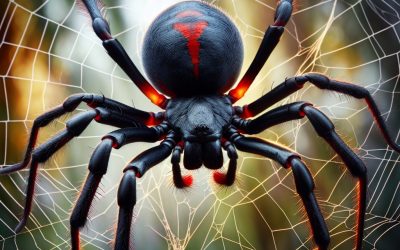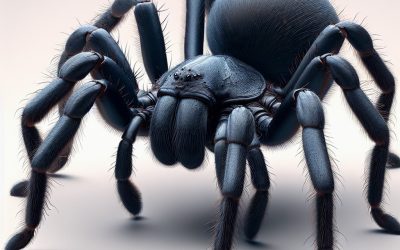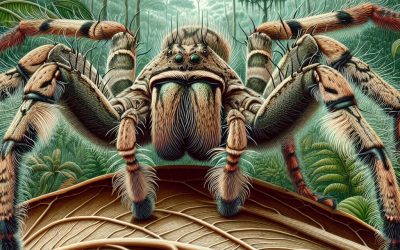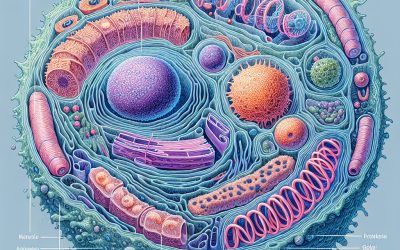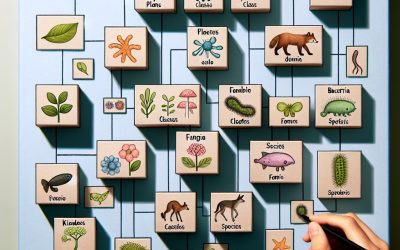Biology (from the Latin ‘bios’ meaning life and ‘logia’ meaning study of) is the study of all organisms and all aspects of their life-cycles.
Biology
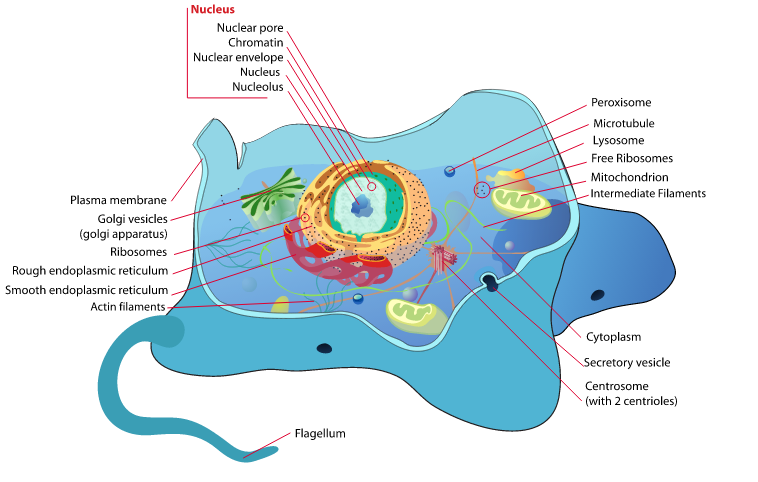
Biology (from the Latin ‘bios’ meaning life and ‘logia’ meaning study of) is the study of all organisms and all aspects of their life-cycles. The subject of Biology, as we know it today, was born in the nineteenth century along with physics, chemistry and the scientific method. Before then ‘Natural Philosophy’ which was the study of nature and the physical universe, included biology, chemistry and physics.
Natural Philosophy The study of our natural world is known to date back to the time of Mesopotamia around 3,100 BC but as this was the beginning of written historic record the study probably existed long before this time. Modern Biology The first great development of modern biology came from Charles Darwin, who is often referred to as the father of modern biology. Although known for his work ‘On the Origin of Species’ (published in 1859), Darwin produced nineteen additional publications, wrote hundreds of scientific papers and fourteen thousand letters, all of which laid the foundations for Biology as a subject we recognise today. Although he did not invent the theory of evolution, he certainly made the idea more accessible to the world. His theory was evolution by natural selection; where by an organism with a mutation may be better adapted to certain environmental changes and therefore improve their chance of survival. This means the organism with the useful mutation is more likely to survive, reproduce and hopefully pass on the useful mutation. Overtime species are able to adapt to the world around them and this process gave the Galapagos Islands (and the world) the rich diversity of its inhabitants. Deoxyribonucleic acid or DNA was first discovered in 1869 but its role was not known at the time. It was in 1943 that it was discovered that it is DNA that is responsible for programming the genetic makeup of organisms and passing on the mutations Darwin had discovered. This new understanding of how amino acids are programmed on a cellular level to make up various parts of the organism was a huge leap forward but new profound discoveries are being made everyday in the field of biology.
Redback Spider: The Notorious Arachnid of Australia
The redback spider (Latrodectus hasseltii) is a venomous spider native to Australia. It belongs to the family Theridiidae, which includes other widow spiders found around the world. The redback spider is known for its distinctive red or orange stripe on its abdomen, which gives it its name. It is a small spider, with females measuring around 1 cm in length, while males are much smaller, only reaching about 3-4 mm in length. Studying the redback spider is important for several reasons. Firstly, it is one of the most venomous spiders in Australia, and its bite can cause severe symptoms in humans. Understanding its behavior and venom can help in developing effective treatments for bites. Secondly, the redback spider plays an important role in the ecosystem as a predator, controlling populations of insects and other small arthropods. Lastly, the redback spider has cultural significance in Australia and is often featured in folklore and art. Key Takeaways The Redback Spider is a venomous spider native to Australia. It is easily recognizable by its black body with a distinctive red stripe on the abdomen. Redback Spiders are found in a variety of habitats across Australia, including urban areas. Their diet consists mainly of insects, which they catch in their webs using their venom. Redback Spider bites can cause severe symptoms, but prompt medical treatment can be effective in managing the effects of the venom. Physical Characteristics of the Redback Spider The redback spider has a distinctive appearance that makes it easily recognizable. The female redback spider has a black body with a prominent red or orange stripe on its abdomen. This stripe...
Sydney Funnel-web Spider: The Deadly Arachnid Lurking in Australia’s Backyard
The Sydney Funnel-web Spider (Atrax robustus) is widely regarded as Australia’s most dangerous arachnid. Found primarily in the Sydney region, this spider is known for its highly venomous bite, which can be fatal if left untreated. Understanding the dangers posed by this spider is of utmost importance, as it can help individuals take necessary precautions and seek appropriate medical attention in the event of a bite. Key Takeaways The Sydney Funnel-web Spider is Australia’s most dangerous arachnid. Identifying physical characteristics of the spider can help distinguish it from other species. The spider is found in certain habitats and regions of Australia. The venom of the Sydney Funnel-web Spider can be deadly to humans and animals. Signs and symptoms of a bite should be closely monitored and treated immediately. Physical characteristics of the Sydney Funnel-web Spider: Identifying the deadly creature The Sydney Funnel-web Spider is a large and robust spider, with males typically measuring around 1.5 to 3.5 centimeters in body length, while females are slightly larger, ranging from 2 to 5 centimeters. They have a shiny black or dark brown coloration, with a hairless carapace and a distinctive bulbous abdomen. The males are easily identifiable by their large, forward-facing fangs. In comparison to other spider species, the Sydney Funnel-web Spider stands out due to its size and aggressive behavior. While many spiders are relatively harmless to humans, this particular species poses a significant threat due to its potent venom. Habitat and distribution of the Sydney Funnel-web Spider: Where to find the arachnid The Sydney Funnel-web Spider is commonly found in moist habitats such as rainforests, wet sclerophyll forests, and...
Arachnophobia Alert: The Deadly Bite of the Brazilian Wandering Spider (Phoneutria spp.)
The Brazilian Wandering Spider, also known as the banana spider or armed spider, is a highly venomous spider that is native to South and Central America. It belongs to the genus Phoneutria, which means “murderess” in Greek, and is considered one of the most dangerous spiders in the world. The spider gets its name from its wandering behavior, as it does not build a web to catch its prey like other spiders. The Brazilian Wandering Spider is known for its large size, with a leg span that can reach up to 6 inches. It has a brown or tan body with distinctive markings on its abdomen. The spider is also known for its aggressive behavior and quick movements, making it a formidable predator. Key Takeaways The Brazilian Wandering Spider is one of the most venomous spiders in the world. They can be identified by their brown or black color, hairy legs, and distinctive red or pink marking on their abdomen. The venom of the Brazilian Wandering Spider can cause muscle spasms, paralysis, and even death in severe cases. Symptoms of a bite include pain, swelling, sweating, and difficulty breathing. Treatment for a bite includes seeking immediate medical attention, administering antivenom, and managing symptoms. How to identify a Brazilian Wandering Spider The Brazilian Wandering Spider can be identified by its physical characteristics. It has a large, robust body with long legs and a distinctive pattern on its abdomen. The spider’s body is usually brown or tan in color, with darker markings that resemble a violin shape on its abdomen. One way to differentiate between male and female Brazilian Wandering Spiders...
Cells Test – Cell Structure Test
Your Cells Test may take a minute to load. If you have to navigate away from this page for any reason, don’t worry, you will have the option to resume your test from the point you left upon your return. The test may have multiple choice, multiple answer or true/false questions and is timed but has no time limit. It should be considered an aid to study for exams or merely a test of your knowledge base giving you indication of areas you may need further study in. Once you have completed your test you will be able to review your results. This will give you some indication of the area you need further study or which areas you are proficient. We recommend you take the cells test before reading the subject matter. If you score 80% or more than you have the option of skipping the section but if you score less than 80% we recommend you read the material associated. Then try the test again until you are able to gain a passing result of 80% correct. Error: Embedded data could not be displayed. Why Use the Cells Test? As previously stated tests give the user indication of their strengths and weaknesses. This allows them to spend less time studying things they are proficient in and spend more time improving their knowledge where they may have gaps. Tests are also a great tool for revision because they require the user to recall information they may have previously learnt, be it recently or some time ago. This...
Animal Phylum – Phyla
Kingdom Animalia – Phylum (Phyla = plural): (within the animal kingdom there are some 36 phyla but of these phyla there are nine that are most commonly used. These nine are listed first) What are Phyla or Phylum? The Most Common Phyla Annelida Arthropoda or Arthropods Chordata Cnidaria Echinoderms Mollusca Nematoda Platyhelminthes Porifera Less Common Phyla Acanthocephala Acoelomorpha Brachiopoda Bryozoa Chaetognatha Ctenophora Echiura Entoprocta Gastrotricha What are Phyla or Phylum? Phyla – the plural of phylum- is the name for a hierarchical grouping in taxonomy. All living organisms can be placed into groups based on their evolutionary path (or physical characteristics as it was before our understanding of evolution). Each organism belongs to a kingdom – animal, plant, bacterium or fungus – and these organisms can then be grouped into sub-groups. The process can be continued until you find the species of the organism. The Phyla of an organism is the subgroup of organisms from the animal kingdom (Kingdom Animalia). The Most Common Phyla Phylum Annelida Annelida (commonly known as segmented or ringed worms contains 3 classes (class Polychaeta, class Hirudinea and class Clitellata (also known as class Oligochaeta) This Phylum has two main morphological features. One feature is their segments or metamerism each with separate respiratory, excretory and locomotary organs that are repeated in each segment. The number of segments increases with age; the youngest of which are found at the posterior of the animal. The second common features are the ‘chaetae’ which are little bristles that can be found on each segment and may be thin tubular structures or hooks); Phylum...
Taxonomy – The Classification of Organisms
Taxonomy is a branch of biology concerned with the classification of organisms into groups such as Kingdom, Phylum, Class etc. History of Taxonomy Modern Taxonomy History of Taxonomy Over the ages many people have set out to categorise the world around us for various reasons. Plants, and in particularly herbs, were categorised by their healing properties and this classification (as set out by a 2nd century physician Dioscorides in ‘De Materia Medica’) was used by doctors for many years. For biologists though it was the work of Swedish botanist, zoologist and physician Carl Linnaeus (1707 – 1778) that created modern taxonomy. His structure for naming and grouping all life on the planet was so straight forward; it is the bases for the modern taxonomy system. For thousands of years humans looked around at living organisms and found that they could place them into one of two groups, either flora or fauna. This was the original bases for classification, as set out by Linnaeus, with the animal kingdom (Kingdom Animalia) and the plant kingdom (Kingdom Plantae) at the head of the hierarchical system. This seemed adequate until our understanding of unicellular organisms made classification into the two kingdoms difficult at best. In 1969 R.H. Whittaker, a professor of biology in Ecology and Systematics at Cornell university wrote a paper ‘New Concepts of Kingdoms of Organisms – Evolutionary relations are better represented by new classifications than by the traditional two kingdoms’ (see Whittaker_1969). This paper has been accredited to bringing us the five Kingdom structure we now use today. Modern Taxonomy Taxonomy is the process of grouping...
Mammals
The term Mammals is the name given to a group of animals that produce milk for their young (in mammary glands) which currently accounts for 5,000 species. What are Mammals? Rise of mammals Common characteristics Hair Three Middle Ear Bones Milk Production from mammary glands Orders of Mammals What are Mammals? The term Mammals is the name given to a class of animals that produce milk for their young (in mammary glands) which currently accounts for 5,000 species. They have populated every part of the globe, from whales and dolphins in the sea, bats in the sky, moles that live underground and land mammals that live on every continent. Rise of mammals Although mammals existed at the time of the dinosaurs their population and diversity exploded during the Paleocene epoch – a 10 million year period that immediately followed the dino-extinction event. For around 160 million years the mammals lived in the shadow of dinosaurs but some 65.5 million years ago the Cretaceous-Tertiary extinction event (also known as the K-T event) occurred, wiping out the dinosaurs and dawning the Age of Mammals. Common characteristics As well as producing milk for their young mammals have other equally important similarities or characteristics. These include the production of hair and the three middle ear bones. Hair All mammals have it and any animal with it is a mammal1. Even aquatic mammals such as dolphins, whales and porpoises have hair somewhere on the body of adults. This hair is used by mammals for many purposes such...
DNA
Deoxyribonucleic acid or DNA is found in every cell of every living organism on the planet. It is the code which contains the genetic makeup of the organism. The Structure of DNA Polynucleotides Dideoxynucleic acid molecule consisting of three components: a nitrogenous base, either a purine or pyrimidine; a pentose sugar, either ribose or deoxyribose and a phosphate group. A nitrogenous base + a sugar= nucleoside; a nucleoside + a phosphate= nucleotide. Purine: nine member double ring: Adenine and Guanine (A and G) Pyrimidine: six member single ring: Cytosine and Thymine or Uracil in Rna (C, T and U) A purine bases will always bind to its corresponding pyrimidine base: A-T/U and C-G. Structure of DNA Each carbon atom of the pentose sugars is labelled with a prime sign eg. C-1’. The C-1’ atom of the pentose sugar is linked to the nitrogenous base and C-3’ and 5’ atoms are termini of a nucleic acid molecule. At the C-2’ position, deoxyribose has a hydrogen atom whereas ribose has a hydroxyl group. The presence of the OH group distinguishes RNA from DNA. http://www.mun.ca/biology/scarr/iGen3_02-07_Figure-L.jpg Polynucleotides Two nucleotides are joined together by a phosphate group linked to two sugars. The phosphoric acid is joined to the two OH groups on the sugars by an ester linkage on both sides, creating a phosphodiester bond. At one end of the chain there is a free 3’- hydroxyl (OH) group and at the other end, a free 5’- phosphate group. Two nucleotides joined together are called a dinucleotide, three is...
Cells and Cell Structure
The term organism means anything that is living and all organisms whether they are plant, animal, bacteria are made of microscopic cells, each type with unique cell structure. Common Characteristics of all cells Cytoplasm Plasma Membrane Ribosomes Types of Cells Prokaryotic Cells Bacteria cell Pili Plasmids Nucleoid Bacteria Cell Wall Capsule Prokaryotic Flagellum Eukaryotic Cells Similarities of Eukaryotic Cells Nucleus Endoplasmic Reticulum Rough Endoplasmic Reticulum Smooth Endoplasmic Reticulum Golgi Apparatus Vacuole Mitochondria Animal Cells Unique Characteristics of Animal Cells Lysosome Plant Cells Unique Characteristics of Plant Cells Chloroplast Plant Cell Wall The term organism means anything that is living and all organisms whether they are plant, animal, bacteria are made of microscopic cells. In fact all life on earth began as single celled organisms which over time have combined into more complex life forms. The question as to whether a virus is alive or on the border between life and a bag of chemicals is widely contested. Many biologists maintain that viruses are not living as they are not made of cells. Additionally viruses do not multiply by themselves but instead infect a host cell which replicates and copies the virus as it does so. The question as to whether a virus is alive or on the border between life and a bag of chemicals is widely contested. Common Characteristics of all cells All cells contain a plasma membrane and cytoplasm. Cytoplasm Cytoplasm is a fluid that surrounds the inner-workings of the cells and allows the Ribosome to float around in all the cells. The Ribosome are small spheres that...
